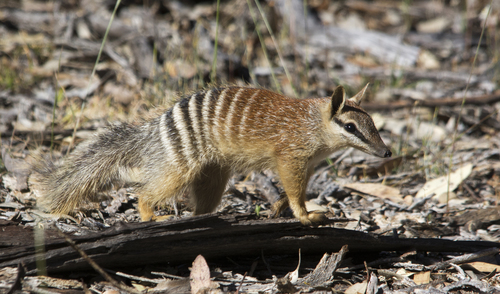
Numbat
The numbat, with its distinctive banded back and termite-exclusive diet, is a unique marsupial from Australia. Active by day, it uses a long, sticky tongue to hunt termites, playing a vital role in pest control. Its striking appearance and specialized feeding habits make it an ecological marvel.
4-8 years
Lifespan
280.0 - 550.0 g
Weight
Brown, Grey, Red, Black, White, Tan
Color
15 mph
Top Speed
Endangered
Conservation Status
Decreasing
Population Trend
Characteristics
Myrmecobius fasciatus, commonly known as the numbat or banded anteater, is a small marsupial native to Australia. It features striking black and white stripes across its back and has a slender, pointed snout. Numbats are diurnal, feeding exclusively on termites, using their long, sticky tongues to extract prey. They play a crucial role in controlling termite populations.
Distribution Range of the Numbat
Myrmecobius fasciatus, commonly known as the Numbat, is native to Australia. Historically, it was found across southern Australia from New South Wales to Western Australia. However, its range has significantly decreased, and it is now primarily found in small, isolated populations in southwest Western Australia.
Numbat's Habitat
Environmental Conditions
Numbats inhabit Eucalyptus woodlands and forests, particularly those with a dense understory of shrubs. They prefer environments with sandy or loamy soils where they can dig for termites, their primary food source. The climate in these regions is typically characterized by hot, dry summers and mild, wet winters.
Ecological Niche
Numbats are diurnal and terrestrial, with a specialized diet consisting almost exclusively of termites. They play a crucial role in controlling termite populations in their ecosystem. Numbats are solitary animals and require large home ranges to find enough food, often covering several hectares.
Copyright @ Nature Style Limited. All Rights Reserved.
 English
English